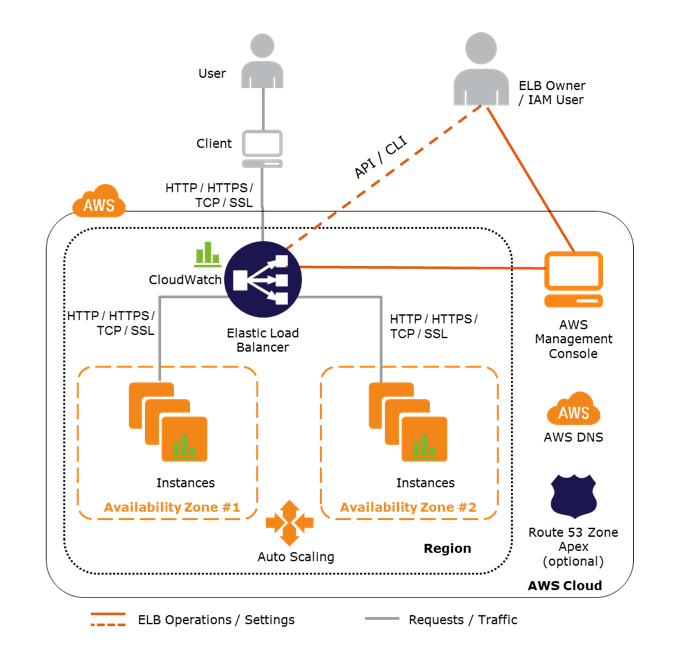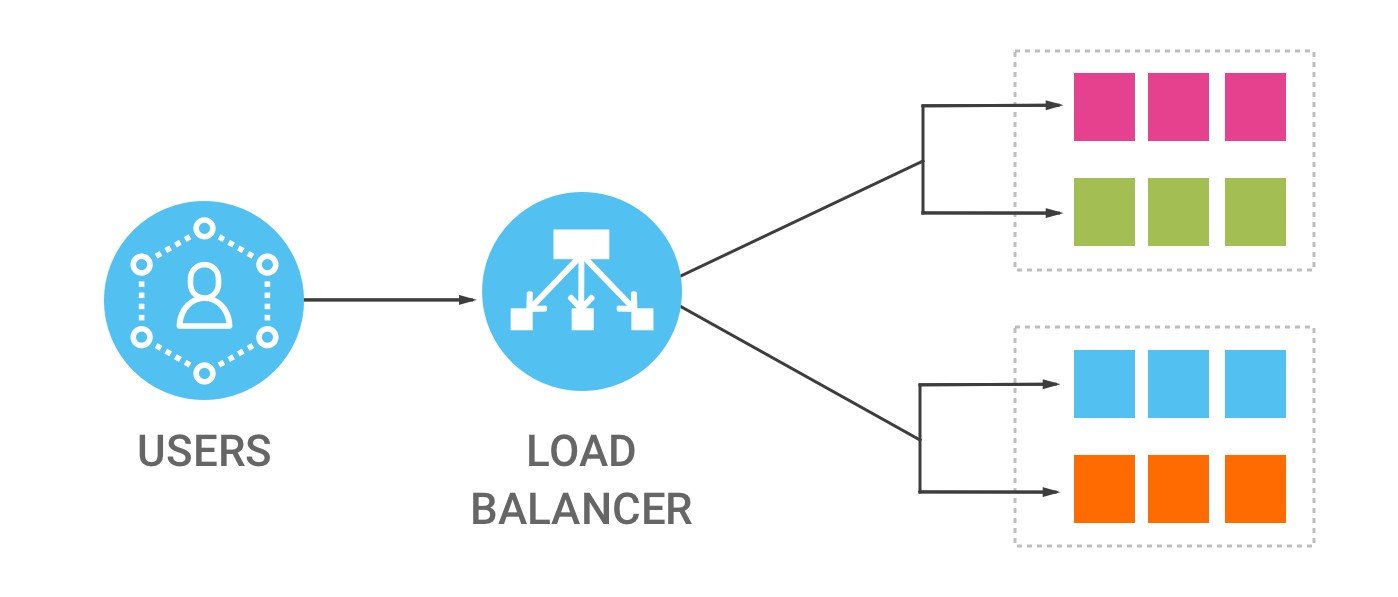What is ELB (Elastic Load Balancing)?
Elastic Load Balancing automatically distributes traffic from incoming applications through various destinations, such as Amazon EC2 instances, containers, IP addresses and Lambda functions. You can control the variable load of your application’s traffic in a single zone or in several availability zones.
Types of Load Balancers
Elastic Load Balancing offers three types of load balancers that have the necessary level of high availability, automatic scalability and security to make your applications tolerant of errors.

Application load balancer
The application load balancer is most suitable for the load balancing of HTTP and HTTPS traffic. It provides advanced request addressing aimed at the delivery of modern application architectures, including microservices and containers. The application load balancer, running at the individual request level (layer 7), directs traffic to destinations within the Amazon Virtual Private Cloud (Amazon VPC) depending on the content of the request.

Network load balancer
The network load balancer is best suited to balance the traffic load of transmission control protocol (TCP) and transport layer security (TLS) for which extreme performance is required. It operates at the connection level (layer 4), directs traffic to destinations within the Amazon Virtual Private Cloud (Amazon VPC) and is capable of controlling millions of requests per second while maintaining ultra-low latencies.
Classic load balancer
The classic load balancer provides basic load balancing in several Amazon EC2 instances and works at both the request level and the connection level. It is designed for applications that were built within the EC2-Classic network.
Benefits of ELB
- High availability: Elastic Load Balancing automatically distributes incoming traffic between several destinations: Amazon EC2 instances, containers, IP addresses and Lambda functions in multiple availability zones.
- Security: Elastic Load Balancing interacts with the Amazon Virtual Private Cloud (VPC) to provide robust security features, including integrated certificate management, user authentication, and SSL / TLS decryption.
- Elasticity: Elastic Load Balancing is able to control rapid changes in network traffic patterns. In addition, deep integration with Auto Scaling ensures sufficient application capacity to meet different application load levels.
- Flexibility: Elastic Load Balancing also allows you to use IP addresses to route requests to application destinations. This process provides flexibility around the way to virtualize the destinations of your applications.
- Solid monitoring and auditing: Elastic Load Balancing allows you to monitor applications and their performance in real time with Amazon CloudWatch metrics, logs and tracking applications.
Become the cloud networking hero of your business.
See how Aviatrix can increase security and resiliency while minimizing cost, skills gap, and deployment time.
